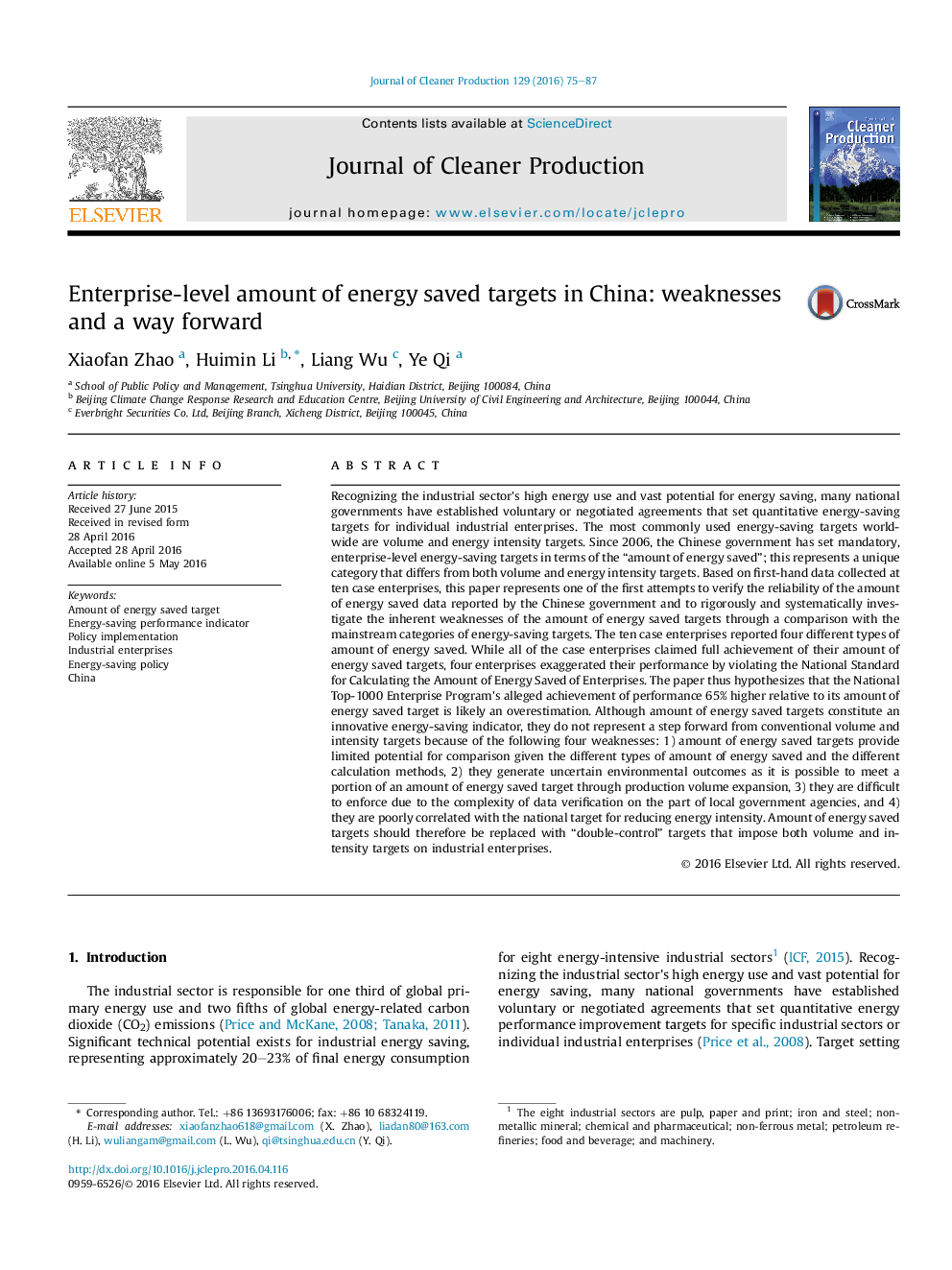| کد مقاله | کد نشریه | سال انتشار | مقاله انگلیسی | نسخه تمام متن |
|---|---|---|---|---|
| 8101830 | 1522120 | 2016 | 13 صفحه PDF | دانلود رایگان |
عنوان انگلیسی مقاله ISI
Enterprise-level amount of energy saved targets in China: weaknesses and a way forward
ترجمه فارسی عنوان
میزان اهداف ذخیره شده انرژی در چین در سطح سازمانی: نقاط ضعف و راه پیش رو
دانلود مقاله + سفارش ترجمه
دانلود مقاله ISI انگلیسی
رایگان برای ایرانیان
کلمات کلیدی
مقدار انرژی ذخیره شده هدف، شاخص عملکرد صرفه جویی در انرژی، پیاده سازی سیاست، شرکت های صنعتی، سیاست صرفه جویی در انرژی، چین،
موضوعات مرتبط
مهندسی و علوم پایه
مهندسی انرژی
انرژی های تجدید پذیر، توسعه پایدار و محیط زیست
چکیده انگلیسی
Recognizing the industrial sector's high energy use and vast potential for energy saving, many national governments have established voluntary or negotiated agreements that set quantitative energy-saving targets for individual industrial enterprises. The most commonly used energy-saving targets worldwide are volume and energy intensity targets. Since 2006, the Chinese government has set mandatory, enterprise-level energy-saving targets in terms of the “amount of energy saved”; this represents a unique category that differs from both volume and energy intensity targets. Based on first-hand data collected at ten case enterprises, this paper represents one of the first attempts to verify the reliability of the amount of energy saved data reported by the Chinese government and to rigorously and systematically investigate the inherent weaknesses of the amount of energy saved targets through a comparison with the mainstream categories of energy-saving targets. The ten case enterprises reported four different types of amount of energy saved. While all of the case enterprises claimed full achievement of their amount of energy saved targets, four enterprises exaggerated their performance by violating the National Standard for Calculating the Amount of Energy Saved of Enterprises. The paper thus hypothesizes that the National Top-1000 Enterprise Program's alleged achievement of performance 65% higher relative to its amount of energy saved target is likely an overestimation. Although amount of energy saved targets constitute an innovative energy-saving indicator, they do not represent a step forward from conventional volume and intensity targets because of the following four weaknesses: 1) amount of energy saved targets provide limited potential for comparison given the different types of amount of energy saved and the different calculation methods, 2) they generate uncertain environmental outcomes as it is possible to meet a portion of an amount of energy saved target through production volume expansion, 3) they are difficult to enforce due to the complexity of data verification on the part of local government agencies, and 4) they are poorly correlated with the national target for reducing energy intensity. Amount of energy saved targets should therefore be replaced with “double-control” targets that impose both volume and intensity targets on industrial enterprises.
ناشر
Database: Elsevier - ScienceDirect (ساینس دایرکت)
Journal: Journal of Cleaner Production - Volume 129, 15 August 2016, Pages 75-87
Journal: Journal of Cleaner Production - Volume 129, 15 August 2016, Pages 75-87
نویسندگان
Xiaofan Zhao, Huimin Li, Liang Wu, Ye Qi,
